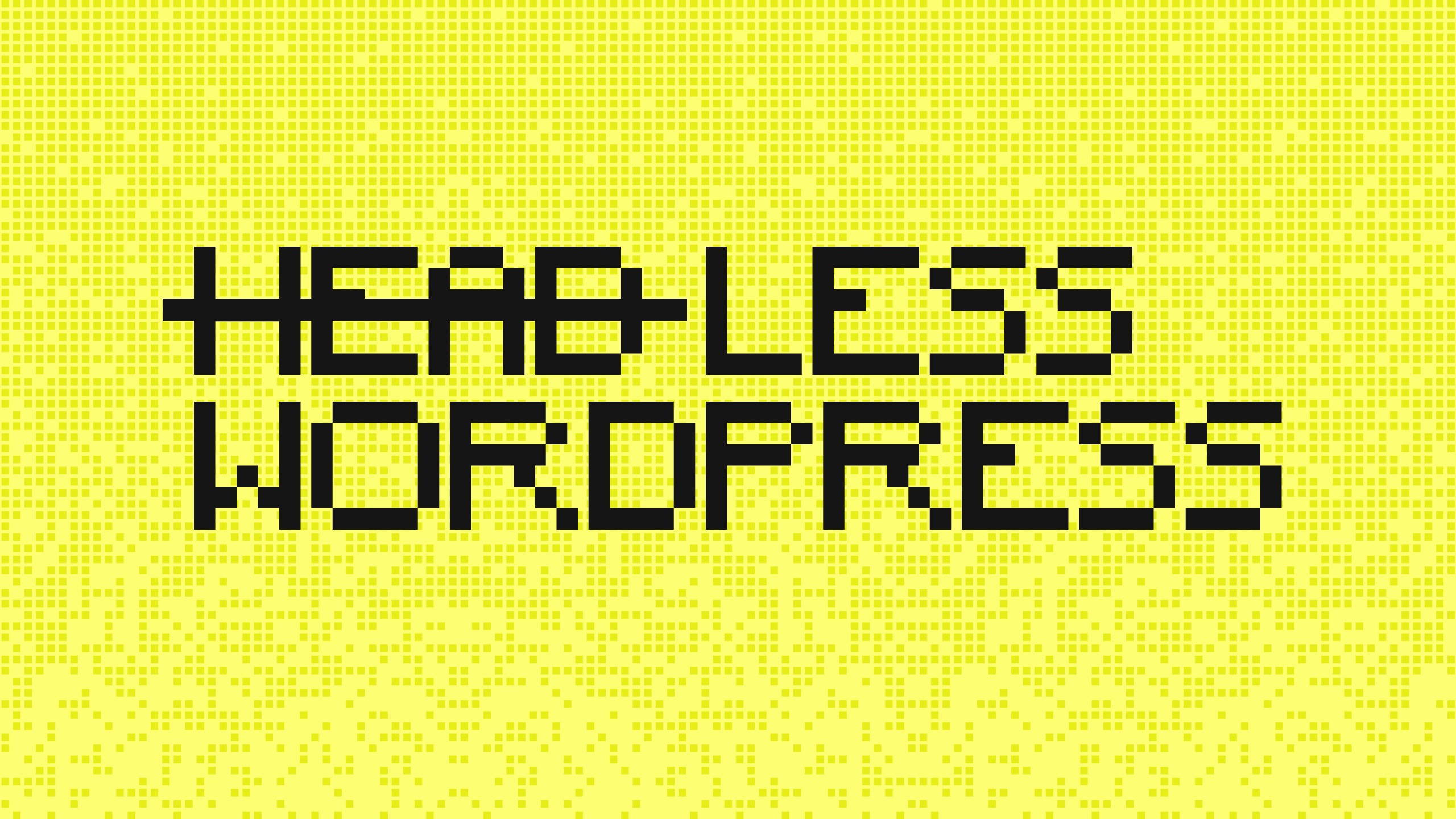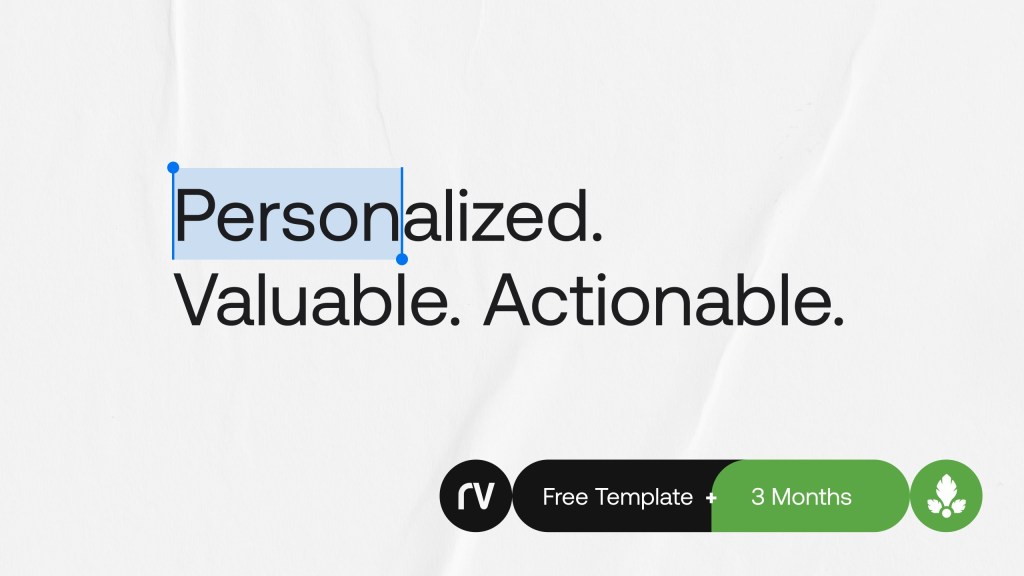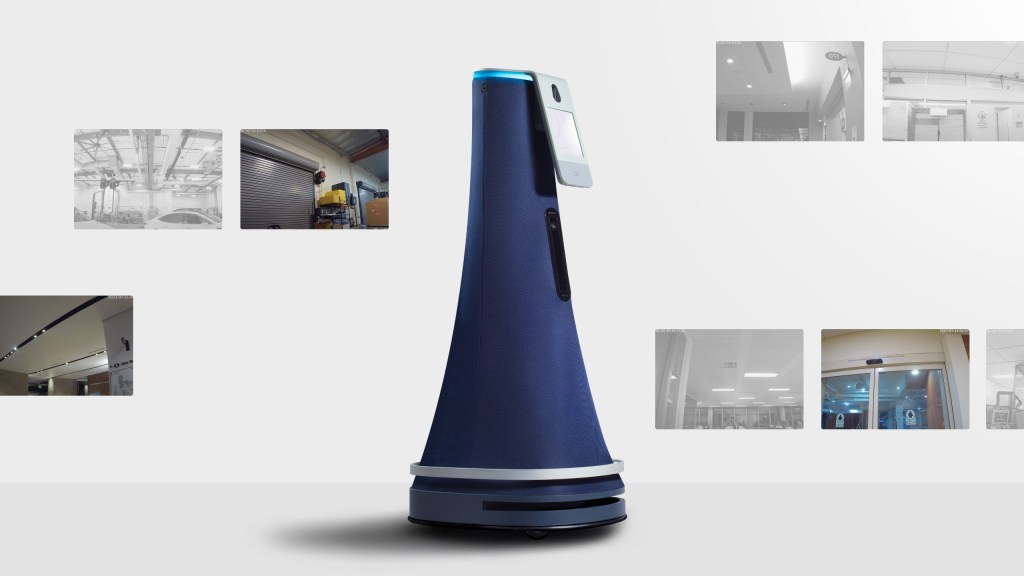Contents
- What is headless WordPress?
- Why you need headless WordPress
- Getting started with headless WordPress
- Is it right for me?
In the rapidly evolving world of web development, staying ahead of the curve is crucial. One emerging trend that has gained significant attention is headless WordPress. If you’re unfamiliar with this concept or eager to learn more, you’ve come to the right place. In this comprehensive guide, we’ll delve into what headless WordPress is, why you need it, and how to get started on decoupling the front-end and back-end of your WordPress site.
First, let’s get an understanding of headless WordPress
Traditional WordPress architecture consists of a monolithic structure, where the front-end (user interface) and back-end (content management system) are tightly coupled. However, headless WordPress breaks away from this convention by separating the front-end and back-end, resulting in a more flexible and scalable system. We called this decoupled.
In a headless setup, the WordPress back-end continues to handle content creation, management, and storage. However, the front-end is detached, allowing developers to choose any technology stack they desire to build a fully customized and interactive user interface. This opens up a world of possibilities for building fast, dynamic, and personalized websites.
Why you need headless WordPress
🚀 Enhanced performance
With a decoupled architecture, headless WordPress optimizes performance by minimizing server requests and rendering only the necessary content. This results in lightning-fast page load times, improved user experience, and better search engine rankings.
💪 Flexibility and innovation
By separating the front-end and back-end, developers are free to experiment with cutting-edge technologies, frameworks, and libraries. This empowers them to create immersive experiences, leverage modern development practices, and adapt to changing user expectations.
🎹 Scalability
Headless WordPress enables easy scalability by allowing independent scaling of the front-end and back-end. This flexibility ensures that your site can handle increasing traffic and user demands without compromising performance.
🧵 Seamless cross-platform integration
With a headless approach, content can be delivered across multiple platforms effortlessly. Whether it’s a website, mobile application, smart device, or even a digital kiosk, your WordPress content can be easily consumed and managed.
Getting started with headless WordPress
01. Set up WordPress
Begin by installing and configuring a standard WordPress instance. Choose a reliable hosting provider that meets your specific needs and ensure that your site is up to date with the latest version of WordPress.
02. Choose a Headless framework
Next, you’ll need to select a headless framework that will serve as the front-end for your WordPress content. Some popular options include React, Angular, Vue.js, or Next.js. Assess your project requirements, developer expertise, and community support to determine the most suitable framework for your needs.
03. Create a RESTful API
WordPress provides a powerful REST API that allows you to access your site’s data programmatically. Ensure that the REST API is enabled in your WordPress installation and configure it to expose the required endpoints for retrieving and manipulating content.
04. Build the front-end
With your chosen headless framework and WordPress API in place, it’s time to build the front-end. Leverage the framework’s components, routing system, and data fetching capabilities to create a dynamic and interactive user interface. Fetch and render data from the WordPress API endpoints to populate your site with content.
05. Implement additional functionality
Depending on your project requirements, you may need to extend the functionality of your headless WordPress setup. This could include integrating third-party services, implementing user authentication, or incorporating additional content management features.
06. Deploy and test
Once your headless WordPress site is developed, it’s essential to thoroughly test it across different devices, browsers, and screen sizes. Ensure that the user experience is seamless and the performance meets your expectations. Deploy the site to a hosting provider or platform of your choice, making sure it meets the technical requirements of your front-end framework. Configure any necessary server-side setups, such as caching or CDN integration, to optimize performance.
07. Content management
While the front-end is decoupled, the WordPress back-end remains the central hub for content management. Use the familiar WordPress admin interface to create, edit, and organize your content. Leverage the power of WordPress plugins and themes to enhance the functionality and design of your site.
08. Continuous maintenance and updates
Like any web project, it’s crucial to perform regular maintenance and updates to keep your headless WordPress site secure and up to date. Stay informed about the latest updates for your front-end framework, WordPress core, and plugins. Keep an eye on security vulnerabilities and apply patches promptly.
09. Leverage plugins and headless CMS solutions
If you’re not keen on building the entire headless architecture from scratch, consider leveraging existing plugins and headless CMS solutions. Plugins like WPGraphQL and WP REST API can simplify the process of creating a headless WordPress setup. Additionally, there are headless CMS platforms like Contentful and Strapi that integrate seamlessly with WordPress, providing a dedicated content management system for your headless front-end.
10. Collaborate and learn from the community
The headless WordPress community is vibrant and supportive. Engage with like-minded developers, join forums, attend meetups, and explore online resources to expand your knowledge and share experiences. Collaborating with others will help you stay updated with the latest trends, best practices, and innovative solutions in the headless WordPress ecosystem.
Is it right for me?
Embracing headless WordPress opens up a world of possibilities for building high-performance, flexible, and scalable websites. By decoupling the front-end and back-end, you gain the freedom to experiment with new technologies, deliver seamless cross-platform experiences, and optimize performance. While the process of setting up a headless WordPress site may require some initial effort, the long-term benefits far outweigh the investment in many cases.
But, it’s not right for everyone. Headless WordPress may not be the best choice in certain scenarios. Here are some situations where headless WordPress might not be the right fit:
- Non-technical users Headless WordPress requires a higher level of technical expertise compared to traditional WordPress setups. If you don’t have the necessary technical knowledge or a development team to handle the setup and maintenance, it may not be the best option for you.
- Small/simple websites If you have a small website with basic content management needs and don’t require complex integrations or custom front-end experiences, using headless WordPress might be overkill. Traditional WordPress, with its user-friendly interface and extensive theme/plugin ecosystem, can be a more straightforward solution in such cases.
- Content-focused websites If your primary focus is creating and managing content, and you don’t require advanced front-end functionality or interactive user experiences, headless WordPress might not provide significant benefits over a traditional WordPress setup. The additional complexity and development effort involved may not be justified for content-heavy websites.
- Limited development resources Headless WordPress involves building a separate front-end application to consume the WordPress API. This requires additional development resources and skills. If you have limited budget or development capacity, it may be challenging to implement and maintain a headless WordPress setup effectively.
- Tight project timelines Headless WordPress setups can take longer to implement compared to traditional WordPress installations. If you have strict project deadlines and need to launch your website quickly, a headless approach may not be the most time-efficient option.
Ultimately, the decision to use headless WordPress depends on your specific project requirements, technical expertise, and resource availability. Consider the trade-offs, benefits, and complexity involved before deciding if it aligns with your needs.
Rareview can help you determine the best fit.
Contact us to set up a time to speak with our team about the benefits of headless vs. traditional WordPress.




